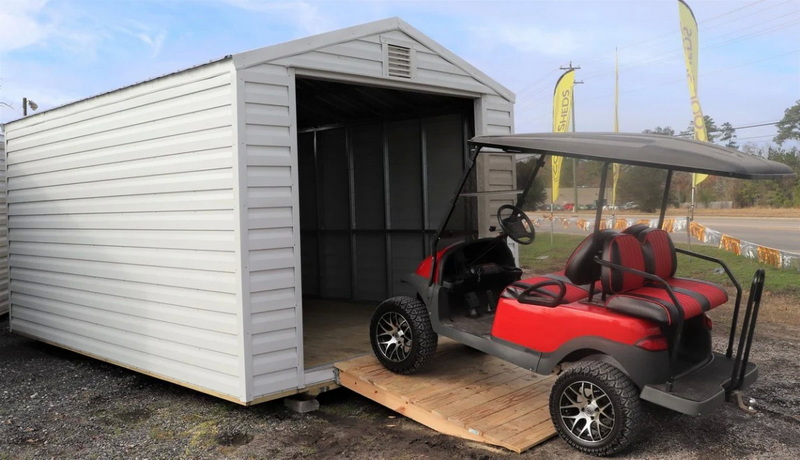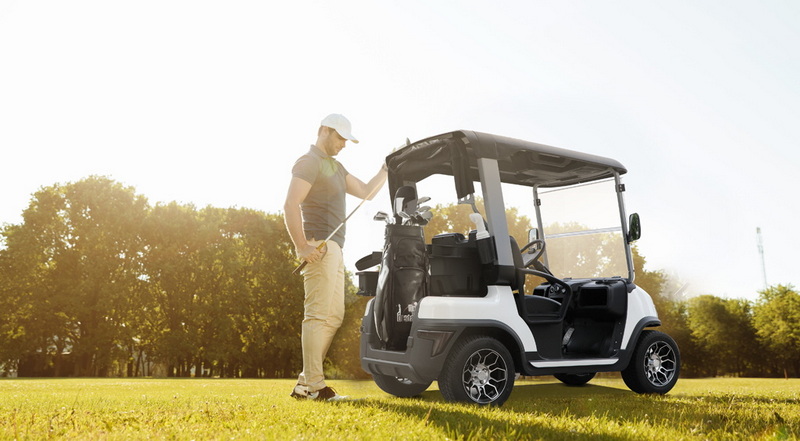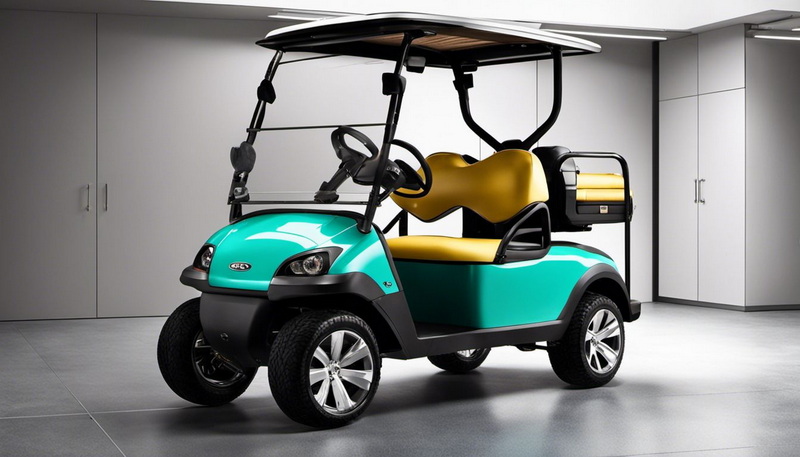Content Menu
● Understanding the Importance of Winter Storage
● Steps to Prepare Your Electric Golf Cart for Winter Storage
>> Clean Your Golf Cart
>> Inspect Your Golf Cart
>> Charge the Battery Fully
>> Disconnect the Battery
>> Store Indoors or Under Shelter
>> Check Tire Pressure
>> Lubricate Moving Parts
>> Secure Your Golf Cart
● Additional Considerations for Winter Storage
>> Regular Maintenance Checks
>> Battery Maintenance
>> Protecting Against Pests
● Preparing Accessories for Storage
● Consider Using a Battery Maintainer
● Understanding Local Climate Impact
● Final Preparations Before Spring Use
● Conclusion
● FAQs
>> 1. What should I do if I don't have indoor storage for my golf cart?
>> 2. How often should I check on my golf cart during winter storage?
>> 3. Can I leave my golf cart plugged in all winter?
>> 4. Is it necessary to disconnect the battery?
>> 5. How do I know if my battery is fully charged?
Storing an electric golf cart during the winter months requires careful planning and execution to ensure that it remains in optimal condition for use when the weather warms up again. Proper storage not only extends the life of the cart but also prevents costly repairs. This comprehensive guide will walk you through the necessary steps to effectively store your electric golf cart without electricity during winter.

Understanding the Importance of Winter Storage
Winter can be harsh on electric golf carts, especially in regions where temperatures drop significantly. Cold weather can lead to battery freezing, corrosion, and other damages if proper precautions are not taken. Thus, understanding how to store your electric golf cart is crucial for maintaining its functionality and longevity.
Steps to Prepare Your Electric Golf Cart for Winter Storage
Clean Your Golf Cart
Before storing your golf cart, it's essential to give it a thorough cleaning. This step helps in several ways:
- Removes Debris: Cleaning helps eliminate dirt, leaves, and debris that can trap moisture and lead to rust.
- Inspection Opportunity: A clean surface allows you to inspect for any damages or wear that may need addressing before storage.
- Preservation of Appearance: Keeping your cart clean preserves its appearance and prevents potential long-term damage.
Use soap and water to clean the exterior and a vacuum for the interior. Ensure you pay attention to the tires and undercarriage as well.
Inspect Your Golf Cart
After cleaning, conduct a detailed inspection:
- Check for Damage: Look for cracks, dents, or any signs of wear on the body.
- Tire Condition: Inspect tires for punctures or low pressure.
- Battery Connections: Ensure battery connections are clean and secure.
Address any issues found during this inspection before proceeding with storage preparations.
Charge the Battery Fully
A fully charged battery is less likely to freeze in cold temperatures. Here's how to do it:
- Charge Completely: Ensure your battery is fully charged before storage.
- Avoid Low Charge: Never store a battery that is less than 50% charged as this can lead to irreversible damage.
If your golf cart uses lithium batteries, it's acceptable to store them at a charge level between 60% and 80%.
Disconnect the Battery
Disconnecting the battery is a critical step:
- Prevent Drain: Disconnecting prevents any potential drain on the battery while in storage.
- Safety Precaution: It reduces the risk of electrical hazards.
Make sure to label the cables if necessary so you can easily reconnect them in spring.
Store Indoors or Under Shelter
The ideal storage location for your golf cart is indoors, such as a garage or shed:
- Protection from Elements: Indoor storage protects against snow, ice, and rain which can cause rust and other damages.
If indoor storage isn't available, consider using a high-quality waterproof cover and park it under a carport or porch to minimize exposure.
Check Tire Pressure
Before storing your golf cart, check tire pressure:
- Inflate Tires: Ensure tires are inflated to the recommended pressure levels.
- Use Tire Covers: If possible, use tire covers to protect them from UV rays and winter elements.

Lubricate Moving Parts
To prevent rust and ensure smooth operation when you take your cart out of storage:
- Lubricate Components: Apply lubricant to moving parts such as brakes and suspension components.
This will help maintain their functionality throughout winter.
Secure Your Golf Cart
Finally, make sure your golf cart is secure:
- Remove Keys: Take out keys and store them in a safe place.
- Cover It Up: Use a protective cover if storing outdoors.
Additional Considerations for Winter Storage
While following these steps will help ensure your electric golf cart is well-prepared for winter storage, there are additional considerations that can further enhance its longevity and performance upon reactivation in spring.
Regular Maintenance Checks
Even while stored, it's beneficial to check on your golf cart periodically:
- Monthly Inspections: Check battery charge levels monthly if possible.
- Visual Inspections: Look for any signs of leaks or corrosion around connections.
Regular checks can help catch potential issues early before they become significant problems.
Battery Maintenance
For those using lithium batteries, it's important to note that they have different maintenance needs compared to lead-acid batteries:
- Self-discharge Rates: Lithium batteries generally lose about 2% of their charge per month while in storage. This means they require less frequent charging compared to lead-acid batteries which can deplete much faster.
- Hydrometer Testing: For lead-acid batteries, consider using a hydrometer every few weeks during storage to check electrolyte levels and overall health.
Protecting Against Pests
When storing your golf cart, especially in a garage or shed, consider pest control measures:
- Seal Entry Points: Ensure that all entry points are sealed to prevent rodents from nesting in your golf cart.
- Use Deterrents: Consider using natural deterrents like peppermint oil or commercial pest repellents around the storage area.
Preparing Accessories for Storage
Don't forget about accessories that may also need attention before winter storage:
- Remove Loose Items: Take out any personal items or accessories from the cart that could be damaged by cold temperatures or moisture.
- Inspect Lighting Systems: Check lights and signals; replace any burnt-out bulbs before storing them away.

Consider Using a Battery Maintainer
If you have access to electricity intermittently during winter months, consider investing in a battery maintainer:
- Trickle Charging: A battery maintainer keeps your battery at an optimal charge level without overcharging it.
- Automatic Shut-off: Many models have an automatic shut-off feature that prevents damage from overcharging.
Using a maintainer ensures that when you're ready to use your golf cart again, it's fully charged without any risk of damage during prolonged periods of inactivity.
Understanding Local Climate Impact
Different climates can affect how you store your electric golf cart:
- Cold Climates: In areas with extreme cold temperatures, additional insulation may be necessary around batteries and sensitive components.
- Mild Climates: If winters are mild where you live, basic precautions may suffice; however, regular checks are still advisable.
Understanding local weather patterns can help tailor your storage approach effectively.
Final Preparations Before Spring Use
As winter comes to an end and you prepare to use your golf cart again:
1. Reconnect Battery: Carefully reconnect the battery terminals ensuring correct polarity.
2. Check Fluid Levels: Inspect brake fluid and other essential fluids; top off as needed before use.
3. Test Electrical Systems: Turn on lights and signals; test all electrical systems before taking it out on the road.
4. Take It for a Spin: Once everything checks out, take your golf cart for a short drive around your property or neighborhood to ensure everything is functioning properly after its winter hibernation.
Conclusion
Properly storing your electric golf cart during winter without electricity involves several crucial steps including cleaning, inspecting, charging the battery, disconnecting it, choosing an appropriate storage location, checking tire pressure, lubricating moving parts, securing the vehicle, conducting regular maintenance checks, protecting against pests, preparing accessories, considering a battery maintainer if possible, understanding local climate impacts, and final preparations before spring use. By following these guidelines meticulously, you can ensure that your golf cart remains in excellent condition throughout the winter months and is ready for action when spring arrives.

FAQs
1. What should I do if I don't have indoor storage for my golf cart?
If indoor storage isn't available, use a high-quality waterproof cover and park it under a shelter like a carport or porch to protect it from harsh weather conditions.
2. How often should I check on my golf cart during winter storage?
It's advisable to check on your golf cart at least once a month during winter storage to ensure that everything is in order and that there are no issues with the battery or other components.
3. Can I leave my golf cart plugged in all winter?
No, it's not recommended to leave your electric golf cart plugged in continuously over winter as this can lead to potential damage from electrical surges or power outages.
4. Is it necessary to disconnect the battery?
Yes, disconnecting the battery is essential as it prevents any drain on the battery while in storage and reduces electrical hazards.
5. How do I know if my battery is fully charged?
Most chargers have an indicator light that shows when charging is complete. Ensure you follow your charger's instructions for confirmation of full charge status.











































